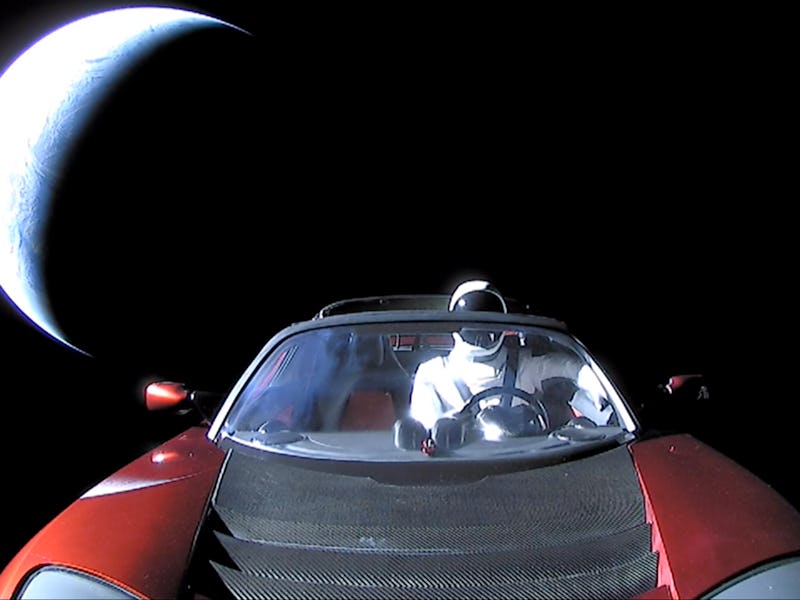Where is Starman? Tesla Roadster’s space trip is set to get lonelier
His car is on an impressive journey.

Poor Starman. The dummy sat in the driver's seat of Elon Musk's red Tesla Roadster is on a journey around the Solar System – and it's becoming increasingly isolated.
Starman may have been the talk of the space community last month, but now the dummy is moving away from both the planet that launched it and the planet Musk wants to explore next. Floating around the Sun at 60,390 mph, Starman's journey looks set to enter a new period of quiet contemplation in the depths of space.
Check out Musk Reads+ to find out more about Starman's journey, the future of space travel, and what comes next for SpaceX.
After its landmark approach toward Mars last month, the closest Starman has come to the planet so far, the dummy has been moving away from both Mars and Earth at speed. The website WhereIsRoadster estimates that the car is 17.3 million miles from Mars, moving away at a speed of 20,189 mph. Starman is 32.4 million miles from Earth, moving away from our planet at a speed of 2,062 mph.
Starman, a dummy wearing a SpaceX spacesuit, could draw lessons from history to survive the lonely depths of space. Michael Collins, the Apollo 11 astronaut, spent 76 hours in lunar orbit while Neil Armstrong and Buzz Aldrin explored the Moon. His isolation from both the other two crew members and the rest of humanity led him to ponder how he was "truly alone, and absolutely isolated from any known life."
Neil Armstrong (left), Michael Collins, and Buzz Aldrin.
Collins later dismissed the press coverage of this part of his trip as "ridiculous." He wrote in his book Carrying the Fire that he felt closer to Houston around the Moon than he may have done in the middle of the Pacific Ocean – he could still chat with Houston for most of the time, after all.
Last year, Collins admitted that he rather enjoyed the peace and quiet away from Mission Control. His main preoccupation, he revealed, was the colony of white mice that stayed with him in quarantine after the mission. The theory was that if the mice got sick, the crew may have brought back unexpected lunar germs. His main thoughts, he explained, were about "those poor little white mice."
Starman launched in the red Tesla Roadster on the Falcon Heavy's first mission in February 2018. In the nearly three years since its launch, the dummy has been out of any space-faring human's view. It's a much longer stretch than Collins' 76 hours, but perhaps a short excursion away from humanity isn't as difficult as it may sound.
Depending on how much is left of the original car and what's still working, Starman would have endured to David Bowie's "Space Oddity" on the in-car sound system nearly 300,000 times. The car also contains other pop culture references, like the words "Don't Panic" on the dashboard — a reference to Douglas Adams' Hitchhiker's Guide to the Galaxy.
The car, which has completed 1.8 orbits around the Sun since launch, has traveled 1.3 billion miles, enough to drive all the world's roads nearly 60 times.
SpaceX's Starship prototype under construction.
The Falcon Heavy has only launched two more times since sending Starman into space. SpaceX's attention is currently focused on the Starship, an under-construction ship designed to send humans to Mars and beyond. Where the Falcon Heavy currently ranks as the most powerful rocket in the world with around five million pounds of liftoff thrust, the Starship's Super Heavy booster is designed to offer around 16 million pounds of thrust.
Tesla is currently developing the second-generation Roadster for launch (on the road) sometime after the Cybertruck, meaning a 2022 release is expected. One for launching on the Starship, perhaps?
This article was originally published on